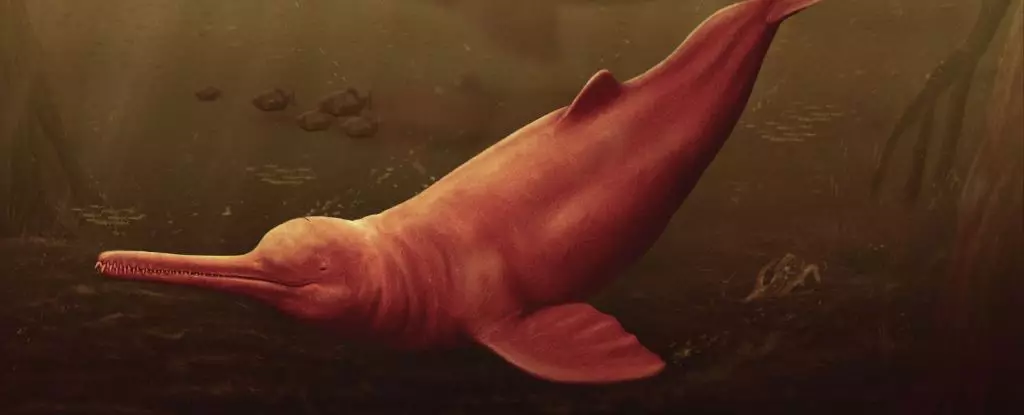A recent discovery has revealed a dolphin that once roamed the waters of the Amazon basin 16 million years ago. This ancient creature, known as Pebanista yacuruna, is believed to be one of the largest freshwater toothed whales to have ever existed. Measuring up to 3.5 meters in length, this dolphin surpassed the size of the pink Amazon river dolphins that inhabit the region today. While it may not be as large as the orca, the largest dolphin in today’s oceans, Pebanista sheds light on the ancient biodiversity of the Amazon’s history.
Unexpected Relatives
What makes Pebanista yacuruna even more intriguing is its genetic relation to dolphins found in the Ganges and Indus rivers of South Asia, rather than the current Amazon river dolphins. This discovery challenges our understanding of the evolutionary history of dolphins and highlights the interconnectedness of different river dolphin species across the globe. The resemblance of freshwater river dolphins to marine dolphins underscores their shared ancestry despite their distinct habitats and physical characteristics.
The fossilized skull of Pebanista found in the Miocene fossil beds of the Pebas Formation provides valuable insights into the lifestyle and adaptations of this ancient dolphin. Like its relatives in the Platanistid genus, Pebanista had prominent crests on its forehead, which are believed to have aided in echolocation. This ability was crucial for river dolphins, given the murky waters they inhabit that limit their vision. The elongated snout of Pebanista suggests a diet similar to that of modern river dolphins, primarily consisting of fish that they catch with precision using their specialized hunting technique.
Researchers propose that Pebanista may have originated as marine cetaceans that migrated into the Amazon basin, eventually settling in the rivers and lakes of the Pebas system. The abundance of food sources in this lush environment allowed Pebanista to thrive for millions of years. However, as the landscape of the region changed, with the transformation of the Pebas system into the Amazon basin we know today, Pebanista faced challenges. The disappearance of its prey and habitat led to the eventual extinction of this remarkable species, leaving a void in the ecosystem that was later filled by the river dolphins that exist in the region today.
Implications for Evolution and Ecosystems
The fate of Pebanista serves as a poignant reminder of the adaptability and vulnerability of species in response to changing environments. The discovery of this ancient dolphin offers valuable insights into the evolutionary dynamics of river dolphins and the impact of shifting ecosystems on species survival. While the Pebas system transformed over time, the current food web of the Amazon may still bear traces of its Miocene origins, highlighting the enduring influence of past ecosystems on present-day biodiversity.
The story of Pebanista yacuruna is a testament to the rich history of the Amazon basin and the intricacies of evolution that have shaped the diverse marine life found in this region. By unraveling the mysteries of this prehistoric dolphin, scientists continue to deepen our understanding of the interconnectedness of species and the resilience required to thrive in a changing world.


Leave a Reply